If you live in Baltimore, MD and are concerned about mold in your air ducts-well, you probably should be. The truth of the matter is that mold growing in your air ducts is cause to take immediate action due to the dangers it presents to your health and wellness.
Mold can cause various moderate to severe allergic reactions, and is also dangerous for infants, small children, the elderly, and the immunocompromised. Simply put, it's not a problem that should be allowed to persist in your home. Plus, did you know that once mold starts to spring up, it can quickly spread to the rest of your ventilation system?
It's like an unseen invader that's dead-set on creeping as far as it possibly can-and it's definitely NOT something you want to share your living space with. So in this article, you're going to learn everything you need to know about how to not only identify whether or not there's mold growing in your air ducts but also how to take action to eliminate it once discovered.
A lot of people misunderstand the 'mold in the air ducts' problem. They mistakenly believe that if you have a nice new house with high-quality ductwork, then 'mold issues' won't apply to them.
But the truth is that even if you have an up-to-date HVAC system with beautiful, expensive ductwork installed, mold can still be an issue. In fact, only two things are required for mold to start growing in your air ducts.
And if you've lived in Baltimore for any length of time, you know that the summer months (especially later in the season) tend to be relentlessly hot, humid, and balmy. It's not uncommon to see humidity levels of 75% or more in this area.
And this commonly leads to the development of mold, even in new homes with up-to-date HVAC systems (and shiny new air ducts to go along with them).

How do you know if mold is growing in the air ducts?
Unfortunately, this can be a complicated question to answer. So let's go over the basics. Here's how to detect signs of mold in your home.
This is usually the very first indication that you may have some mold growing somewhere in your home (and your air ducts are a likely spot to check).
If mold is growing in your air ducts, it'll only be a matter of time before it starts to spread beyond the vents. In such cases, a visual inspection can quickly confirm your fears.
Sometimes, your sensitive respiratory system will detect the mold long before your olfactory senses do. If you start experiencing more 'allergy-like' symptoms than usual, then it may be time to investigate deeper to see if a mold infestation might be serving as the root of the problem.
There are various different types of molds that can infest your otherwise clean and beautiful air ducts.
Here are 8 of the most common types (along with a quick reference guide to identifying them visually):
The fast and easy way to check for mold in your air ducts is to do a visual inspection of the vents. If you see mold in, on, around, or behind the vents, then you can be pretty sure that your ducts are filled with it as well. And if that's the case, you will need mold remediation for your air ducts.
With that being said - mold doesn't always show up visually near the vents - so if you are concerned about mold in the air ducts, a professional mold inspection can confirm whether or not it is a problem so you can act accordingly.
If you need a professional mold assessment and live in or near the greater Baltimore, MD area, contact us here at FDP Mold Remediation to get it checked ASAP. You definitely don't want this unseen invader lurking in your air ducts any longer.
If mold is growing in your air vents, then your HVAC system is likely circulating the spores from that mold throughout your home every time it kicks on and blows heat or air through the vents.
This can cause a number of respiratory issues and moderate to severe health problems, including allergic reactions (according to EPA.gov). Some of these reactions may include:
It can also have a serious negative impact on anyone within the home who suffers from asthma or seasonal allergies and can have a destructive impact on anyone who is immunocompromised.
Plus, mold in the home tends to be especially dangerous for infants, small children, and the elderly, making it more crucial than ever that you get your ducts checked on a yearly basis to protect yourself and your family from these invasive and toxic life forms.
Here are some steps that you can take to help prevent the buildup of mold in your air ducts.
With all of that being said-unfortunately, there are some instances where you actually literally cannot prevent mold growth from occurring. You may be able to slow it down and prevent it to a certain extent, but here's the cold, hard truth of it:
If you have an HVAC system that includes ductwork of any kind, you're at risk for mold. And if you haven't hired a professional cleaning service to check/treat/remove the mold, then you probably already have some growing in your air ducts - releasing spores into the air.
Here at FDP Mold Remediation of Baltimore, we've been hard at work removing mold from homes and residences since 2005. We've literally treated thousands of homes for mold-and if there's one thing we've learned, it's that most DIY mold treatment remedies end up failing.
And here's why.
The ductwork that runs through your home is hard to reach. There are crevices, turns, bends, and long stretches that are just nearly impossible to reach without the proper equipment. Plus, cleaning and removing the mold is a bit of a hazard in its own right, due to the fact that once you start stirring up those spores, they'll go airborne and put you at risk of inhaling them in a concentrated dose.
Thus, we always recommend that every residential homeowner with an HVAC ductwork system contact us at 410-401-8114 to help check for mold and remove it-quickly, easily, and efficiently.
The simple truth of the matter is that mold is super bad for you-and it shouldn't be allowed to make a permanent 'home' in your home. You deserve fresh clean air and a mold-free environment. So contact us today at FDP Mold Remediation - and let's get rid of your mold problem once and for all.
The costs associated with mold remediation will depend on the size and scope of damage inflicted upon an area. To best assess costs associated with remediation, professional mold inspectors can take samples for testing as part of an assessment to identify the type of mold present and the extent of contamination.
Overall, mold remediation costs range from several hundred to several thousand dollars; but their expense should be seen as worthwhile if protecting both your health and home is important to you.
If you suspect mold infestation in your home, acting quickly to stop its spread and subsequent health concerns is of the utmost importance. Contact FDP Mold Remediation of Baltimore immediately for professional mold services to ensure the air in your house remains safe for you and your loved ones.



